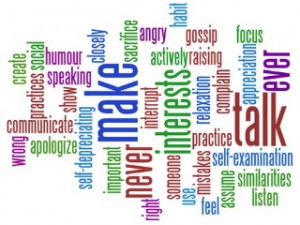In the education system in the U.S., so many resources are utilized in order to teach children how to read. Starting in our early elementary years, various skills and tools are drilled into our heads to enable literacy. From memorizing the alphabet to understanding grammar rules to practicing reading comprehension skills, the education system ensures that children are equipped with the necessary tools to read. It makes sense, then, that the literacy rate in the U.S. is 99% – an extremely successful number that proves the effectiveness of teaching young children necessary reading skills.
However, out of all the skills drilled into our heads as children, far too many are focused on relationships with words, numbers, and tests. What about the skills that are needed to build our relationships with people? We may be taught some of the basics – like how to share or converse, for example – but we’re not taught how to understand another person’s perspective. It’s like teaching children how to read words without telling them what they mean. They’re missing the most important part.
another person’s perspective. It’s like teaching children how to read words without telling them what they mean. They’re missing the most important part.
As a nation – and as a world – we’re lacking certain “people comprehension skills.” Just like there’s a difference between reading and reading comprehension skills, there’s a difference between people skills – like casually engaging in a conversation – and people comprehension skills – actually understanding where they’re coming from. We simply don’t understand each other, and we’re not equipped with the skills to do so. We can listen to someone with a different opinion, but do we really understand what they mean?
It’s no wonder that we can’t all simply get along. From Democrats versus Republicans to Arabs versus Israelis, isn’t all conflict just a big misunderstanding? A gap in perspective? A difference in opinion?
It sounds simple, but we’re all different and there will always be clashing perspectives. In order to solve any type of problem, people have to learn how to understand each other. Imagine what kind of effects learning these skills can have on a national – or even global – level. Instead of thinking “I’m right” and “You’re wrong,” we can try to understand how and why someone else has a certain opinion. Teaching children these tools to do this doesn’t have to be complex – people comprehension exercises can be as simple as an elementary student explaining why he prefers the color blue while his friend prefers the color red. The skill itself is simply opening up the dialogue between them so there can be an understanding of the reasons behind each opinion.
Implementing these skills and practicing these exercises at a young age – just like practicing analytical reading – can enable children to grow into open-minded adults. As a society, we can become far more understanding and learn how to think more objectively when resolving both internal and international conflict. Perhaps the U.S. wouldn’t be so polarized. Perhaps war wouldn’t always be occurring in some part of the world. Perhaps we could all – quite simply – get along.
Rebecca Birnbaum is a Program and Research Intern with the SISGI Group focusing on nonviolent conflict resolution, nonprofit management, and sustainable development. She is a senior at the University of Michigan, where she studies Anthropology, Political Science, and Peace and Social Justice.


1 pings